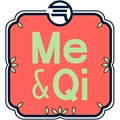Liver Qi Stagnation
The information provided here is not a replacement for a doctor. You shouldn't use it for the purpose of self-diagnosing or self-medicating but rather so you can have a more informed discussion with a professional TCM practitioner.
At a glance
Preliminary reading: What is a pattern? The Liver in Chinese Medicine The concept of Qi Stagnation
Key attributes
Chinese name: 肝气郁结 Pinyin name: Gān Qì Yù Jié
Pattern nature: Full
Pattern hierarchy: Specific pattern under Qi Stagnation
Common combinations: Obstruction Of the Spleen By Dampness with Liver Qi Stagnation
Causes
Precursor patterns: Liver Blood Deficiency Cold-Damp invading the Spleen Heart Qi Stagnation and five other possible precursors
Common causes: 1. Emotional stress, 2. Diet, 3. Overwork
Diagnosis
Common symptoms: Anger Sighing Anxiety Moodiness Melancholy and ten other symptoms
Pulse type(s): Wiry (Xian)
Tongue description: Normal or slightly red on the sides
Treatment
Treatment principle: Smooth the Liver, invigorate Liver Qi
Common formulas: Xiao Yao San Jia Wei Xiao Yao San Yue Ju Wan and two other formulas
Pathology
When Liver Qi does not flow smoothly or regularly, it becomes Stagnant and in Excess. This leads to Heat accumulating in the Liver. This affects not only the Liver, but other connected Organs as well as the Seven Emotions.
Liver Qi Stagnation is not only the most seen Liver disharmony, but also one of the most common TCM patterns in general.
The feeling of ‘Distension’ (zhang 胀) is the main symptom of Liver Qi Stagnation, especially distention in the hypochondrium, chest, epigastrium or abdomen. To describe this feeling, the term ‘bloating’ is also often used in English-speaking countries.
Emotionally speaking, patients are often depressed, moody and irritable. For women, they often have painful and irregular periods as well as premenstrual breasts distension. Wiry pulse can also be used to diagnose this pattern.
To treat Qi Stagnation, it is important to avoid using tonifying herbs as they create Excess and thus worsen Stagnation , like putting more cars to a bad traffic jam. Therefore, it is recommended to give herbs that Regulating Qi and Blood together with Herbs that clear Heat.
Causes
Precursor patterns: Liver Qi Stagnation can derive from Liver Blood Deficiency Cold-Damp invading the Spleen Heart Qi Stagnation Pericardium Qi Stagnation Small Intestine Qi Pain Dampness in the Gallbladder Damp-Heat in the Gallbladder Large Intestine Qi Stagnation
Emotional stress: Prolonged suppressed or overly expressed frustration, anger or resentment can largely disturb the normal Qi circulation and cause Qi Stagnation in the Liver.
Diet: Unhealthy diet rich in stimulants, drugs, fatty and oily foods, recreational drugs, alcohol, coffee, black tea can give to this pattern.
Overwork: Overwork without sufficient rest over a long term can cause this pattern.
Diagnosing Liver Qi Stagnation
Diagnosing a pattern in Chinese Medicine is no easy feat and should be left to professional practitioners. In particular one has to know how to differentiate between different types of pulses and tongue coatings, shapes and colors as well as learn to read from a long list of seemingly unrelated symptoms.
Pulse type(s): Wiry (Xian)
Tongue description: Normal or slightly red on the sides
Main symptoms: Anger Sighing Anxiety Moodiness Melancholy Depression Mood swings Chest distension Abdomen distension Premenstrual tension Epigastrium distension Irregular menstruation HypochondriaI distension Feeling of lump in the throat Premenstrual breast distension
Diagnosis commentary: Key characteristic symptoms of this pattern are the depression, moodiness and general feeling of distension, especially distention in the hypochondrium, chest, epigastrium or abdomen.
Treating Liver Qi Stagnation
Treatment principle
Smooth the Liver, invigorate Liver Qi
Herbal formulas used to treat Liver Qi Stagnation
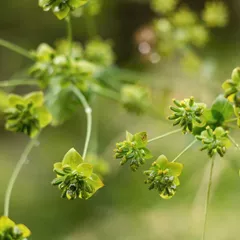


The top herbs in Chai Hu Shu Gan San are Bupleurum Roots (Chai Hu), Szechuan Lovage Roots (Chuan Xiong) and Coco-Grass Rhizomes (Xiang Fu)
Chai Hu Shu Gan San
Source date: 1602
Number of ingredients: 7 herbs
Key actions: Disperses Stagnant Liver Qi and Blood. Alleviates pain. Harmonizes Blood.
Formula summary
Chai Hu Shu Gan San is a 7-ingredient Chinese Medicine formula. Invented in 1602, it belongs to the category of formulas that promote Qi movement.
Besides Liver Qi Stagnation, Chai Hu Shu Gan San is also used to treat Rebellious Qi or Liver Blood Stagnation.

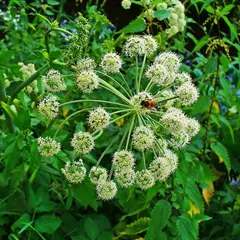
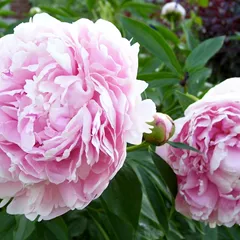
The top herbs in Xiao Yao San are Bupleurum Roots (Chai Hu), Dong Quai (Dang Gui) and White Peony Roots (Bai Shao)
Xiao Yao San
Source date: 1107 AD
Number of ingredients: 6 herbs
Key actions: Harmonizes the function of Liver and Spleen. Relieves Liver Qi stagnation. Nourishes the Blood.
Formula summary
Xiao Yao San is a 6-ingredient Chinese Medicine formula. Invented in 1107 AD, it belongs to the category of formulas that harmonize Liver-Spleen.
Besides Liver Qi Stagnation, Xiao Yao San is also used to treat Liver Blood Stagnation or Liver Qi Deficiency.



The top herbs in Jia Wei Xiao Yao San are Bupleurum Roots (Chai Hu), Dong Quai (Dang Gui) and White Peony Roots (Bai Shao)
Jia Wei Xiao Yao San
Source date: Ming dynasty
Number of ingredients: 10 herbs
Key actions: Clears Liver and Spleen Qi Stagnation. Tonifies Spleen. Clears Deficient Heat. Nourishes the blood.
Formula summary
Jia Wei Xiao Yao San is a 10-ingredient Chinese Medicine formula. Invented in Ming dynasty, it belongs to the category of formulas that harmonize Liver-Spleen.
Besides Liver Qi Stagnation, Jia Wei Xiao Yao San is also used to treat Stagnant Liver Qi turning into Fire or Qi And Blood Stagnation.
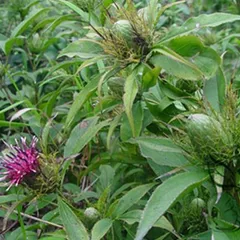


The top herbs in Yue Ju Wan are Atractylodes Rhizomes (Bai Zhu), Szechuan Lovage Roots (Chuan Xiong) and Coco-Grass Rhizomes (Xiang Fu)
Yue Ju Wan
Source date: 1481 AD
Number of ingredients: 5 herbs
Key actions: Promotes the movement of Qi. Releases all types of Stagnation (Qi, Blood, Phlegm, Fire, Food and Dampness).
Formula summary
Yue Ju Wan is a 5-ingredient Chinese Medicine formula. Invented in 1481 AD, it belongs to the category of formulas that promote Qi movement.
Besides Liver Qi Stagnation, Yue Ju Wan is also used to treat Phlegm or Qi Stagnation.
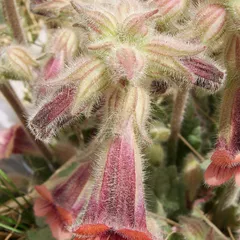
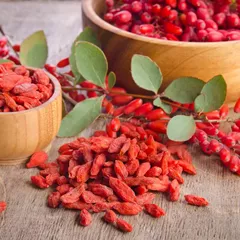
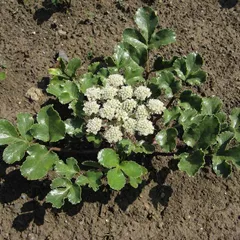
The top herbs in Yi Guan Jian are Unprepared Rehmannia (Di Huang), Goji Berries (Gou Qi Zi) and Glehnia Roots (Bei Sha Shen)
Yi Guan Jian
Source date: 1770
Number of ingredients: 6 herbs
Key actions: Enriches the Yin. Spreads the Liver Qi .
Formula summary
Yi Guan Jian is a 6-ingredient Chinese Medicine formula. Invented in 1770, it belongs to the category of formulas that nourish Yin and tonify.
Besides Liver Qi Stagnation, Yi Guan Jian is also used to treat Liver Yin Deficiency or Kidney and Liver Yin Deficiency.
Diet recommendations
Avoid fried and fatty foods, nuts and nut butters, avocados, cheese and dairy, chips of all kinds, turkey and red meats, alcohol, hot and spicy foods, chocolate, caffeinated foods, drugs and stimulants. Also avoid drinks such as coffee, black tea, cocoa and colas.
Eat plenty of grains, legumes, vegetables and dark leafy greens, such as kale, collards, dandelion, mustard, beet and mustard greens. Lemon juice also helps decongest the Liver.
Try other therapies such as cupping over the back and breathing exercises.
Most importantly find a way to deal with negative emotions like anger, frustration, resentment, irritability, mood swings. It is better to express and release them instead of keeping them inside. Find a job or hobby that is enjoyable or fulfilling.
Avoid mental over-work, physical over-exertion or excessive sexual activity. Take proper rest after all these exercises or work. Try going to bed before 11 pm.
Try regular exercises such as Yoga, Tai Chi, or Qi Gong, swimming, dancing or walking in the nature.
Related conditions
Please keep in mind that a Western Medicine condition can be caused by several Chinese Medicine patterns of disharmony and vice versa. As such a patient suffering from one of the conditions below will not necessarily be suffering from Liver Qi Stagnation, it is just one pattern that's commonly associated with the condition. Click on a condition to learn what other patterns it's associated with.
Abnormal vaginal discharge Irregular menstruation Breast engorgement Mastitis Low breast milk supply Chronic gastritis Peptic ulcers Hepatitis Chronic cholecystitis Intercostal neuralgia
Special highlight: the link between low breast milk supply and Liver Qi Stagnation

Dong Quai (Dang Gui) is the key herb for Xia Ru Yong Quan San, a formula used for low breast milk supply caused by Liver Qi Stagnation
Typical symptoms for low breast milk supply caused by Liver Qi Stagnation: Depression Breast pain Breast lumps Irritability Breast hardness Breast distention Dark nipple color Thick breast milk Breast skin cracks Epigastric distension HypochondriaI distension Insufficient or absent lactation after childbirth
Recommended herbal formulas: Milk Boost Tea, Xia Ru Yong Quan San, Xiao Yao San, Yue Ju Wan
Low levels of milk supply is often due to Liver Qi Stagnation, an issue where Qi gets blocked in the Liver and cannot flow freely to the breasts.
The Liver and nipples are connected through the Liver Channel. To deal with low lactation due to this specific pattern, the Liver needs to be pacified and Qi needs to be moved by eliminating Stagnation. Only when the Stagnation is removed from the Liver Channel that connects to the breasts can the new mum can be encouraged to promote lactation.
Special highlight: the link between mastitis and Liver Qi Stagnation

Snake Gourds (Gua Lou) is the key herb for Gua Lou San, a formula used for mastitis caused by Liver Qi Stagnation
Typical symptoms for mastitis caused by Liver Qi Stagnation: Fever Blister Headaches Depression Mood swings Breast pain Irritability Breast lumps Constipation Breast redness Breast hardness Breast distention Uneven milk supply Breast skin cracks Breast pus discharge Breast skin ichiness White spots on nipples
Recommended herbal formulas: Unblock Nursing Tea, Gua Lou San
If a nursing mother is easily impacted by anger and her emotions are repressed, her Qi will rebel upwards and stagnate in the Liver, which connects to the nipples through the Liver Channel. This leads the milk ducts or nipple orifices to clog, milk cannot come out and thus forms lumps or nodules in the breasts. The nursing mother feels swelling and hardness in the breasts and a strong sharp pain during breastfeeding. Sometimes, only one of the breasts' nipples are clogged and it leads to an...Read more about mastitis
Consequence patterns
Liver Qi Stagnation may be transmitted to the Stomach causing Qi Stagnation there.
The free flow of Qi of all Organs can be disturbed in case of Liver Qi Stagnation. It is especially the case for the Heart as it houses the Mind and it can easily sense the emotional stress causes by Liver Qi.
Stagnant Liver Qi may become Rebellious (i.e. abnormal flow) but not vice versa: Rebellious Liver Qi cannot give rise to Liver Qi Stagnation.
When Qi Stagnation is chronic (i.e. has been stagnating for a long time), it "implodes" and gives rise to Heat, which can then transform into Fire.
Stagnation of Cold in the Liver Channel
A pre-existing Liver Qi Stagnation may predispose the patient to develop Stagnation of Cold in the Liver Channel after an invasion of Cold
The Liver and Pericardium channel are related within the Terminal Yin (Jue Yin) channels. Therefore Pericardium Qi Stagnation may cause Liver Qi Stagnation or vice versa.
The Liver channel goes through the chest, where the Pericardium is the center and closely related to the Liver channel within the Terminal Yin Channels. Thus the Stagnation of Qi in the Liver Channel gives rise to Blood Stagnation in Pericardium.
Small Intestine Qi Pain is usually associated with Liver Qi Stagnation, which it can cause or result from.
If left untreated Liver Qi Stagnation can lead to Dampness in the Gallbladder
If left untreated Liver Qi Stagnation can lead to Damp-Heat in the Gallbladder
Large Intestine Qi Stagnation is often caused by Liver Qi Stagnation.
This is the most important consequence pattern of Liver Qi Stagnation. It is because the Qi commands the Blood. When the Qi circulation is impaired, the Blood ends up being congealed.
Long term Stagnation of Liver Qi can lead to Liver Heat. It can form Damp-Heat in the Liver when combining with Liver Heat.
Stagnant Liver Qi turning to Fire
Long term Stagnant Liver Qi can lead to Liver Fire or Heat.
One of the Liver's main functions is to ensures the smooth flow of Qi throughout the body, in all Organs and in all directions. When Qi is Stagnant, this function is weak, it mean the general Liver Qi is weaken, hence the pattern of Liver Qi Deficiency.
The Liver Channel affects the chest and the disturbance of Liver Qi circulation can easily affect the Heart, resulting in Heart Qi Stagnation first and then Heart Blood Stagnation.
Phlegm in Kidneys or Gallbladder
Oppressed emotional stress can give rise to Liver Qi Stagnation, which then cause the Damp-Heat in the Kidneys and the Gallbladder.
The Liver and the Gallbladder have the direct relationship and influence each other.
